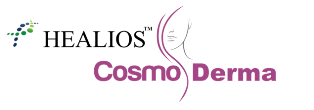What is azelaic acid?
Azelaic acid is a natural material produced by a yeast that lives on normal skin, Malassezia furfur (also known as Pityrosporum ovale).
What is azelaic acid used for?
Azelaic acid is used as a topical treatment for mild to moderate acne, and may be combined with oral antibiotics or hormonal therapy. It is useful for both comedonal acne and inflammatory acne.
Azelaic acid is:
- Antibacterial – it reduces the growth of bacteria in the follicle (Proprionibacterium acnes and Staphylococcus epidermidis)
- Keratolytic and comedolytic – it returns to normal the disordered growth of the skin cells lining the follicle
- A scavenger of free radicals – i.e. it reduces inflammation.
Azelaic acid also helps reduce pigmentation, so it’s particularly useful for darker skinned patients whose acne spots leave persistent brown marks (postinflammatory pigmentation) or who have melasma.
Although not registered in New Zealand for other skin disorders, azelaic acid cream may also be useful in the treatment of:
- Rosacea
- Lentigo maligna, a type of early melanoma. Azelaic acid is not recommended for most cases of this pre-cancerous lesion; where possible, surgery should be performed.
How is azelaic acid cream used?
Azelaic acid cream should be applied to the area affected by acne initially daily, then if tolerated building up to a generous twice-daily application after thoroughly cleansing the skin.
Acne responds slowly to treatment. Some improvement should be seen after one month of using azelaic acid cream. Further improvement should occur with maximum results after six months’ continuous use. Treatment may be continued safely for months or years if the acne remains active.
Does azelaic acid cream have any side effects?
Azelaic acid is nontoxic and is well tolerated by most subjects. However, those with very sensitive skin or who suffer from eczema, may find it irritating to apply, resulting in a mild irritant dermatitis.
Discontinue applying the cream and seek medical advice if you develop severe:
- Redness
- Scaling
- Itching
- Burning
Azelaic acid does not result in:
- Bacterial resistance to antibiotics
- Reduction in sebum production
- Photosensitivity (easy sunburn)
- Staining of skin or clothing
- Bleaching of normal skin or clothing

 7975288129 / 7483528607
7975288129 / 7483528607
